
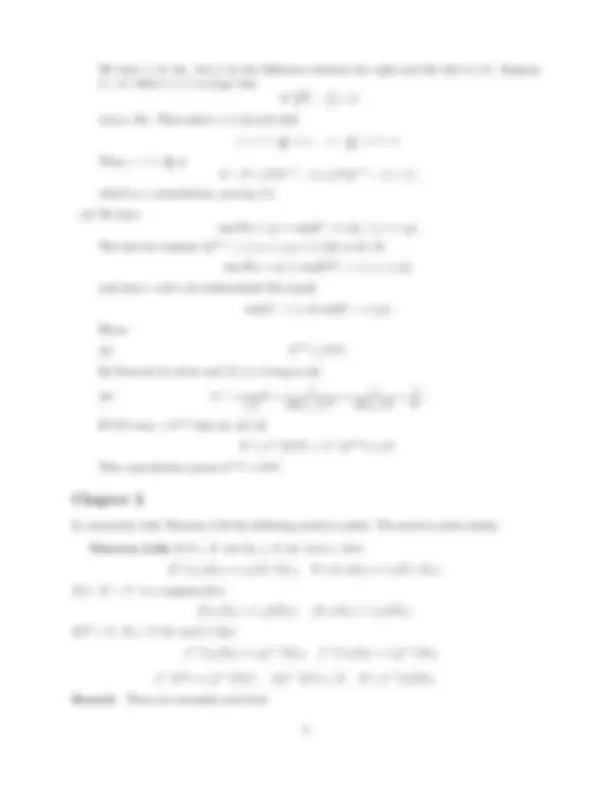
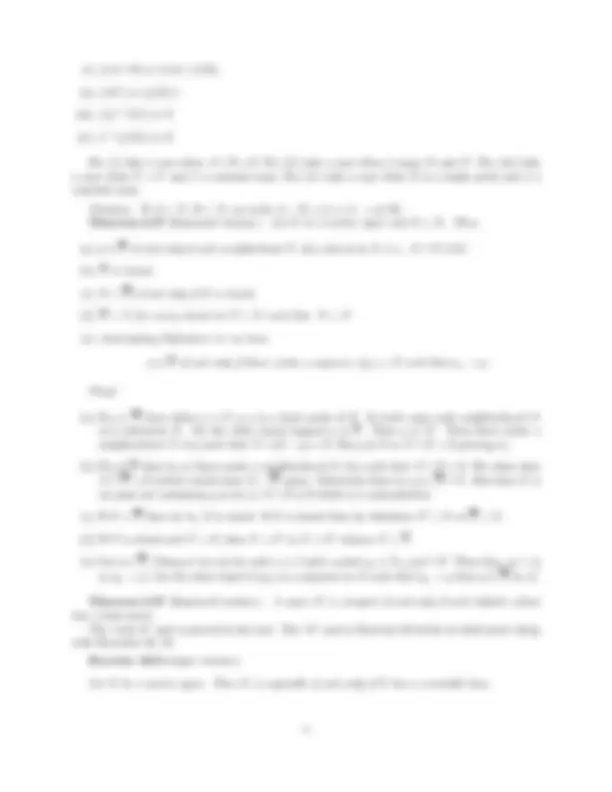
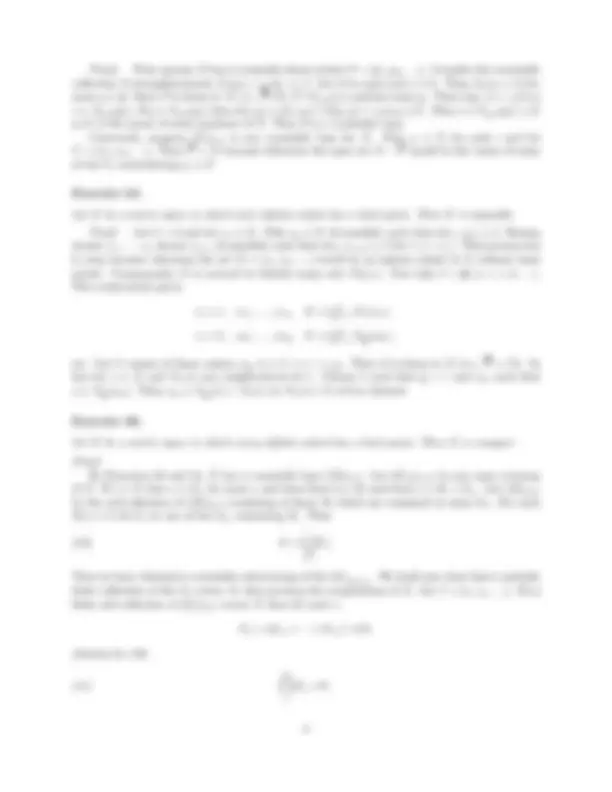
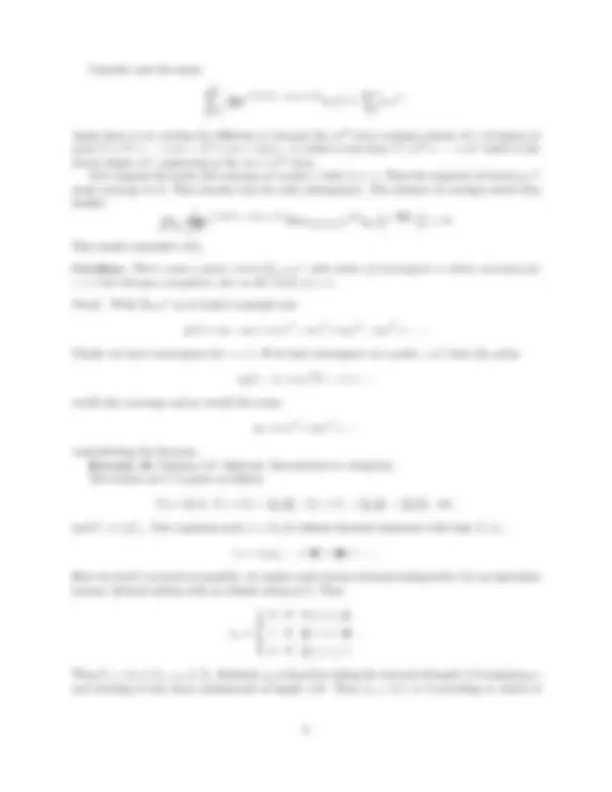
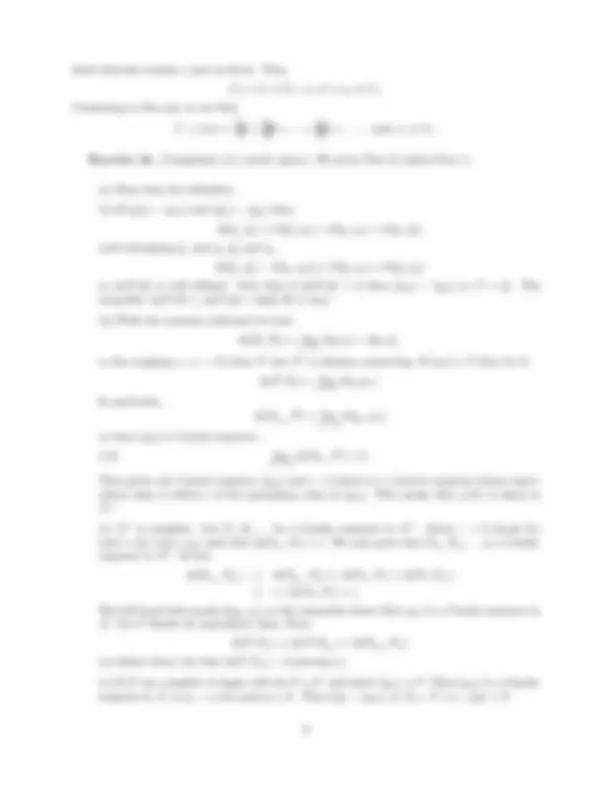
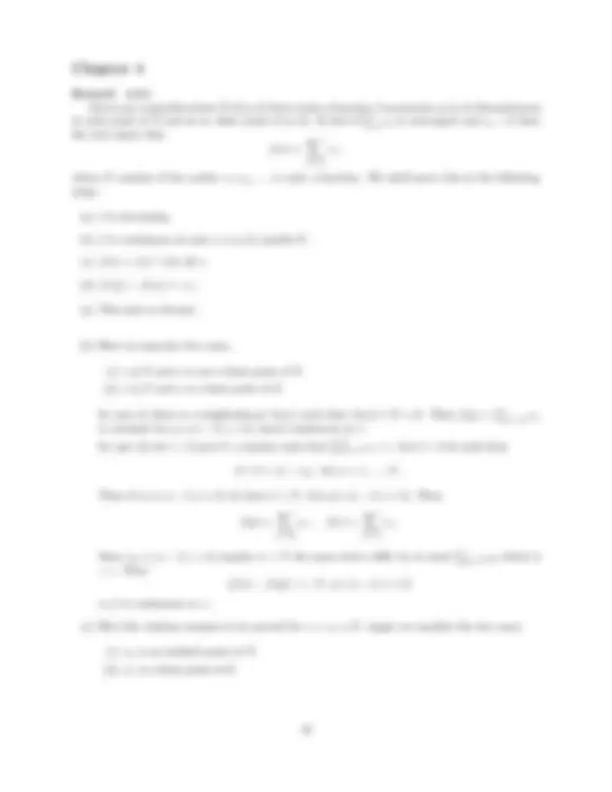
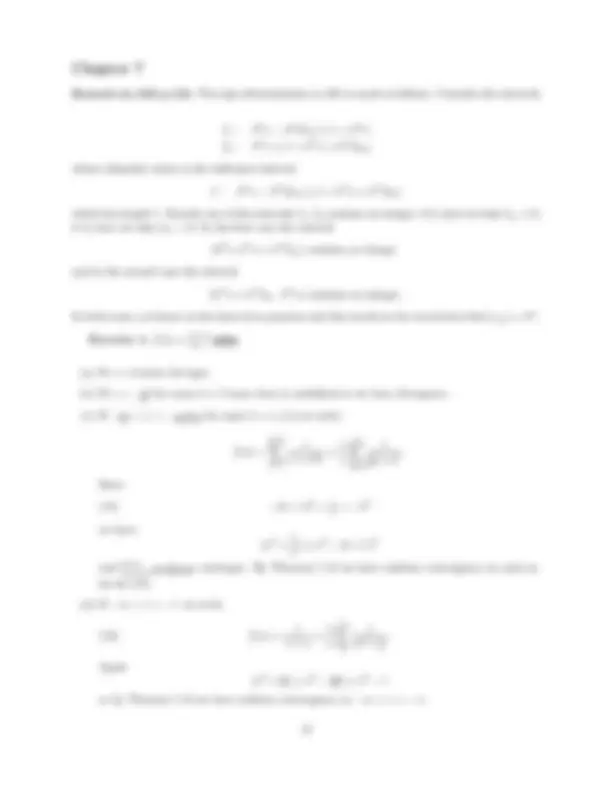
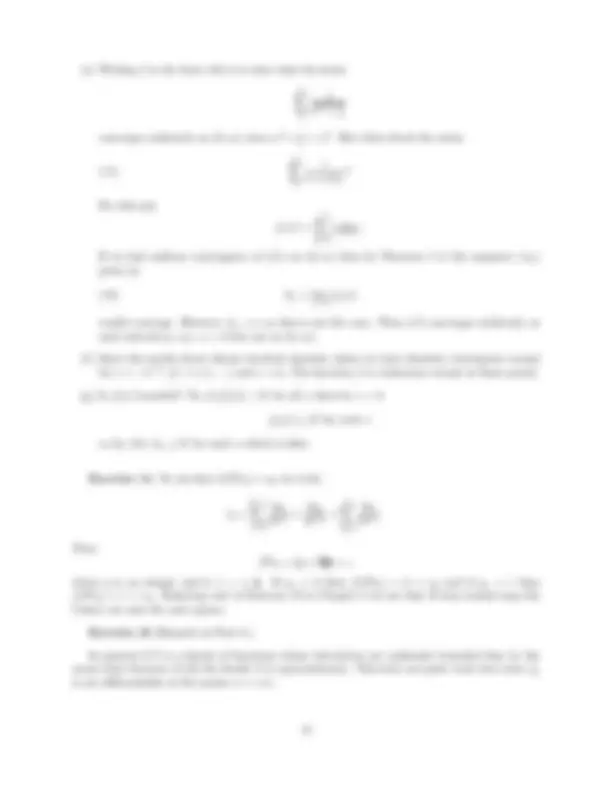



Study with the several resources on Docsity

Earn points by helping other students or get them with a premium plan


Prepare for your exams
Study with the several resources on Docsity

Earn points to download
Earn points by helping other students or get them with a premium plan
Community
Ask the community for help and clear up your study doubts
Discover the best universities in your country according to Docsity users
Free resources
Download our free guides on studying techniques, anxiety management strategies, and thesis advice from Docsity tutors
Supplementary Notes for. W. Rudin: Principles of Mathematical Analysis. SIGURDUR HELGASON. In 18.100B it is customary to cover Chapters 1–7 in Rudin's book.
Typology: Summaries
1 / 15

This page cannot be seen from the preview
Don't miss anything!










In 18.100B it is customary to cover Chapters 1–7 in Rudin’s book. Experience shows that this requires careful planning especially since Chapter 2 is quite condensed. These notes include solu- tions of Exercises 23–26, Chapter 2 because these help in understanding the abstract compactness notion in 2.32, and makes it more useful in analysis. Since the course is preceded by 18.034 which deals with the techniques of differential equations without proofs it seems very desirable to go through Exercise 27 in Ch. 5 and Exercise 25, Ch. 7. This gives concrete applications of the general theory in the course, consolidating 18.034. For reasons of time some omissions seem advisable. This includes the Appendix in Ch. 1, and the section on Rectifiable Curves in Ch. 6. Also taking α(x) = x throughout Chapter 6 seems practical. The notions are then familiar and quite a bit of time is saved. The book has a number of exercises of considerable theoretical interest. However, they are sometimes too difficult to assign to students and as a result they are often omitted altogether. Occasional unproved statements in the text may also baffle the beginner. It is the purpose of these notes to remedy this situation to some extent. Some of this material, like Lusin’s Example, related to 3.44, is of course optional.
On p. 11 we define for each x ∈ R, x > 0 the set
E = {n 0 + n 101 + · · · + 10 nkk : k = 0, 1 , 2.. .} ,
where for each k, nk is the largest integer such that
n 0 + n 101 + · · · + 10 nkk ≤ x.
Proposition. x = sup E.
(Proof not given on p.11): We must prove that if y < x then y is not an upper bound of E. Let rk = x −
n 0 + n 101 + · · · + 10 nkk
Then rk ≥ 0. We shall prove by induction on k that
(1) rk < (^101) k.
This is clear if k = 0. Assume (1) for k. If nk+1 < 9 then rk+1 < (^10) k^1 +1 (proving (1)) because otherwise we could replace nk+1 by nk+1 + 1. If nk+1 = 9 then
rk+1 = rk − (^10) k^9 +1 < (^101) k − (^10) k^9 +1 = (^10) k^1 +
proving (1) in this case too. Now choose p ∈ Q such that 0 < p < x − y and then an integer k > 0 such that 10−k^ < p < x − y. Then y < x − 10 −k^ < x − rk. Since x − rk ∈ E, y is not an upper bound of E. The following exercise is an analog of Exercise 5.
Let A be a bounded set of real number x > 0 and A−^1 = {x−^1 : x = A}. Then
(2) sup A = 1/ inf(A−^1 ).
Proof: The upper bounds of A are just the reciprocals of the lower bounds of A−^1. The least of the former are thus the reciprocals of the largest of the latter. Thus (2) holds.
(a) If m > 0 then p > 0 and
(3) (bm)q^ = (bp)n^ = bmq^.
If m < 0 then p < 0 and bm^ =
b
)−m so by (3)
(bm)q^ =
1 b
b
)−mq = bmq^.
Similarly (bp)n^ = bnp. Thus (bm) n^1 and (bp)
(^1) q have the same nqth^ power so must coincide.
(b) By definition if p, q ∈ J, α
p q (^) = (αp) 1 q (^) so
α
p q
)q = αp^.
Let r = m/n, s = p/q and raise the numbers b
m n +^ 1 q (^) = b mq+np nq (^) and b m n (^) b p q (^) to the nqth^ power. Using (4) the result is the same in both cases. By the uniqueness in Theorem 1.21,
(5) br+s^ = brbs^.
(c) Since b > 1 we have b m n
1 for m, n ∈ J because b m n ≤ 1 leads to bm^ ≤ 1. Thus if r ∈ Q, t ∈ Q , t ≤ r we have by (5)
(6) br^ = btbr−t^ ≥ bt
so sup B(r) = br. Hence we define for x ∈ R
bx^ = sup B(x).
We shall prove
(7) sup t≤x,t∈Q
bt^ = inf r≥x,r∈Q br^.
(i) f (A ∩ B) 6 = f (A) ∩ f (B),
(ii) f (Ec) 6 = (f (E))c,
(iii) f (f −^1 (F )) 6 = F ,
(iv) f −^1 (f (E)) 6 = E.
For (i) take a case when A ∩ B = ∅. For (ii) take a case when f maps X onto Y. For (iii) take a case when F = Y and f a constant map. For (iv) take a case when E is a single point and f a constant map.
Notation If A ⊂ X, B ⊂ X, we write A − B = {x ∈ A : x /∈ B}. Theorem 2.27 (Improved version.) Let X be a metric space and E ⊂ X. Then
(a) p ∈ E if and only if each neighborhood N of p intersects E (i.e., N ∩ E 6 = ∅).
(b) E is closed.
(c) E = E if and only if E is closed.
(d) E ⊂ F for every closed set F ⊂ X such that E ⊂ F.
(e) Anticipating Definition 3.1 we have
p ∈ E if and only if there exists a sequence (pn) ⊂ E such that pn → p.
Proof
(a) If p ∈ E then either p ∈ E or p is a limit point of E. In both cases each neighborhood N of p intersects E. On the other hand suppose p /∈ E. Then p /∈ E′. Thus there exists a neighborhood N of p such that N ∩ (E − p) = ∅. But p /∈ E so N ∩ E = ∅ proving a).
(b) If p /∈ E then by a) there exists a neighborhood N of p such that N ∩ E = ∅. We claim that N ∩ E = ∅ (which would show X − E open). Otherwise there is a q ∈ E ∩ N. But then N is an open set containing q so by a) N ∩ E 6 = ∅ which is a contradiction.
(c) If E = E then by b), E is closed. If E is closed then by definition E′^ ⊂ E so E ⊂ E.
(d) If F is closed and F ⊃ E, then F ⊃ F ′^ so F ⊃ E′^ whence F ⊃ E.
(e) Let p ∈ E. Using a) we can for each n ∈ J pick a point pn ∈ N 1 /n(p) ∩ E. Then d(pn, p) < (^1) n so pn → p. On the other hand if (pn) is a sequence in E such that pn → p then p ∈ E by a).
Theorem 2.37 (Improved version.) A space X is compact if and only if each infinite subset has a limit point. The “only if” part is proved in the text. The “if” part is Exercise 26 which we shall prove along with Exercises 23, 24.
Exercise 23(Stronger version.)
Let X be a metric space. Then X is separable if and only if X has a countable base.
Proof: First assume X has a countable dense subset P = {p 1 , p 2 ,.. .}. Consider the countable collection N of neighborhoods Nr(pi), r ∈ Q, i ∈ J. Let G be open and x ∈ G. Then Nρ(x) ⊂ G for some ρ ∈ Q. Since P is dense in X, i.e., P =X, P ∩ Nρ/ 2 (x) contains some pi. Then d(pi, x) < ρ/2 so x ∈ Nρ/ 2 (pi). If y ∈ Nρ/ 2 (pi) then d(x, y) ≤ d(x, pi) + d(pi, y) < ρ so y ∈ G. Thus x ∈ Nρ/ 2 (pi) ⊂ G so G is the union of some members of N. Thus N is a countable base. Conversely, suppose {Vi}i∈J is any countable base for X. Pick xi ∈ Vi for each i and let F = {x 1 , x 2 ,.. .}. Then F = X because otherwise the open set X − F would be the union of some of the Vi contradicting xi ∈ F.
Let X be a metric space in which each infinite subset has a limit point. Then X is separable.
Proof: Let δ > 0 and let x 1 ∈ X. Pick x 2 ∈ X (if possible) such that d(x 1 , x 2 ) ≥ δ. Having chosen x 1 ,... , xj choose xj+1 (if possible) such that d(xi, xj+1) ≥ δ for 1 ≤ i ≤ j. This process has to stop because otherwise the set E = (x 1 , x 2 ,.. .) would be an infinite subset of X without limit points. Consequently X is covered by finitely many sets Nδ (xi). Now take δ = (^1) n (n = 1, 2 ,.. .). The construction gives:
n = 1, x 11 ,... , x 1 j 1 X =
⋃j 1 i=1 N^1 (x^1 i) n = 2, x 21 ,... , x 2 j 2 X =
⋃j 2 i=1 N^12 (x^2 i)^ ,
etc. Let S consist of these centers xki k ∈ J, 1 ≤ i ≤ jk. Then S is dense in X (i.e., S = X). In fact let x ∈ X and Nr(x) any neighborhood of x. Choose k such that (^1) k < r and xki such that x ∈ N (^1) k (xki). Then xki ∈ N (^1) k (x) ⊂ Nr(x) so Nr(x) ∩ S 6 = ∅ as claimed.
Let X be a metric space in which every infinite subset has a limit point. Then X is compact.
Proof: By Exercises 23 and 24, X has a countable base {Bi}i∈J. Let {Gα}α∈A be any open covering of X. If x ∈ X then x ∈ Gα for some α and thus there is a Bi such that x ∈ Bi ⊂ Gα. Let {Bi}i∈I be the sub-collection of {Bi}i∈J consisting of those Bi which are contained in some Gα. For each Bi(i ∈ I) let Gi be one of the Gα containing Bi. Then
(10) X =
i∈I
Gi.
Thus we have obtained a countable subcovering of the {Gα}α∈A. We shall now show that a suitable finite collection of the Gi covers X, thus proving the compactness of X. Let I = {i 1 , i 2 ,.. .}. If no finite sub-collection of {Gi}i∈I covers X then for each n
Fn = (Gi 1 ∪ · · · ∪ Gin )c^6 = ∅ ,
whereas by (10)
1
Fn = ∅.
Exercise 16. Solution: We have α > 0, x 1 >
α and
xn+1 = (^12)
xn + (^) xαn
n = 2, 3 ,....
Show (xn) is decreasing and that xn →
α. For this note that
xn+1 = (^12)
xn −
α xn
α , xn − xn+1 = (^12)
xn − (^) xαn
The first relation shows by induction that xn >
α and them the second relation shows that (xn) is decreasing. The definition then shows xn →
α.
Exercise 17. Solution: Here one proceeds similarly using the relations
xn+1 −
α =
α − 1)(
α − xn) 1 + xn xn+2 − xn =
1 + α + 2xn (α − x^2 n).
Lusin’s Example (Compare Theorem 3.44.)
There exists a power series Σanzn^ with an → 0 and radius of convergence 1 , diverging everywhere on the circle |z| = 1.
Proof: Let
gm(z) = 1 + z + · · · zm−^1 hm(z) = gm(z) + zmgm(e−^2 πi/mz) + · · · + zmkgm(e−^2 πik/mz) + · · · zm(m−1)gm(e−^2 πi(m−1)/mz).
Notice that when the individual terms in hm(z) are written out as polynomials in z there is no overlap. Thus hm(z) becomes a polynomial in z (of degree (m + 1)(m − 1)) in which each coefficient has absolute value 1. Also if eiϕ^6 = 1
|gm(eiϕ)| =
| 1 − emiϕ| | 1 − eiϕ|
| sin mϕ 2 | | sin ϕ 2 |
The graph of sin x shows 2 π x^ ≤^ sin^ x^ ≤^ x^ for 0^ ≤^ x^ ≤^
π
Thus
|gm(eiϕ)| ≥
2 π |^
mϕ 2 | | ϕ 2 |
= (^2) π m for |ϕ| ≤ (^) mπ.
Consider now the circular arc A = {eiϕ^ : |ϕ| ≤ (^) mπ }.
For each point eiϕ^ on |z| = 1 we can find an integer k such that
e−^
2 πki m (^) eiϕ^ ∈ A.
In fact the arcs e
2 πki m A (0 ≤ k ≤ m) cover the circle. It follows that
(13) Max (^0) ≤k≤m |gm
e−^
(^2) mπk i z
π m for |z| = 1.
Consider now the series ∑^ ∞
m=
√^1 m z
12 +2^2 +···+(m−1)^2 hm(z) = ∑ n
anzn^.
Again there is no overlap for different m because the mth^ term contains powers of z of degree at most 1^2 + 2^2 + · · · + (m − 1)^2 + (m + 1)(m − 1) which is less than 1^2 + 2^2 + · · · + m^2 which is the lowest degree of z appearing in the (m + 1)th^ term. Now suppose the series did converge at a point z with |z| = 1. Then the sequence of terms anzn must converge to 0. This remains true for each subsequence. The absence of overlaps noted thus implies
mlim→∞
m z^1 (^2) +2 (^2) +···+(m−1) 2 Max (^0) ≤k≤m |zmk^ gm
e−^
2 πki m z
This would contradict (13).
Corollary. There exists a power series
n cnz n (^) with radius of convergence 1 which converges for
z = 1 but diverges everywhere else on the circle |z| = 1.
Proof: With Σanzn^ as in Lusin’s example put
g(z) = a 0 − a 0 z + a 1 z^2 − a 1 z^3 + a 2 z^4 − a 2 z^5 + · · ·.
Clearly we have convergence for z = 1. If we had convergence at a point z 6 = 1 then the series
a 0 (1 − z) + a 1 z^2 (1 − z) + · · ·
would also converge and so would the series
a 0 + a 1 z^2 + a 2 z^4 + · · ·
contradicting the theorem. Exercise 19. Solution (cf. Mattuck: Introduction to Analysis). The Cantor set C is given as follows:
C 0 = [0, 1], C 1 = C 0 −
2 3
2 9
8 9
, etc.
and C = ∩nCn. Now represent each x = C 0 by infinite decimal expansion with base 3, i.e.,
x = ·α 1 α 2 · · · = α 31 + α 322 + · · ·.
Here we avoid 1 as much as possible: we replace each ternary decimal ending with 1 by an equivalent ternary decimal ending with an infinite string of 2. Then
α 1 =
0 if 0 ≤ x ≤ (^13) 1 if 13 < x < (^23) 2 if 23 ≤ x ≤ 1
Thus C 1 = {x ∈ C 0 : α 1 6 = 1}. Similarly α 2 is found by taking the interval of length 1/3 containing x and dividing it into three subintervals of length 1/9. Then α 2 = 0, 1 or 2 according to which of
Remark 4.3. Given any countable subset E of (a, b) there exists a function f monotonic on (a, b) discontinuous at each point of E and at no other point of (a, b). In fact if
n cn^ is convergent and^ cn^ >^ 0 then the text states that f (x) =
xn<x
cn ,
where E consists of the points x 1 , x 2 ,.. ., is such a function. We shall prove this in the following steps:
(a) f is increasing.
(b) f is continuous at each x ∈ (a, b) outside E.
(c) f (x) = f (x−) for all x.
(d) f (x+ n ) − f (x− n ) = cn.
(a) This part is obvious.
(b) Here we separate two cases.
(i) x /∈ E and x is not a limit point of E. (ii) x /∈ E and x is a limit point of E.
In case (i) there is a neighborhood Nδ (x) such that Nδ (x) ∩ E = ∅. Then f (y) =
xn<y cn is constant for y ∈ (x − δ, x + δ), hence continuous at x. In case (ii) let ǫ > 0 and N a number such that
N +1 cn^ < ǫ. Let^ δ >^ 0 be such that 0 < δ < |x − xn| for n = 1,... , N.
Then if xk ∈ (x − δ, x + δ) we have k > N. Let y ∈ (x − δ, x + δ). Then
f (y) =
xn<y
cn , f (x) =
xn<x
cn.
Since xk ∈ (x − δ, x + δ) implies k > N the sums above differ by at most
k>N ck^ which is < ǫ. Thus |f (x) − f (y)| < ǫ if y ∈ (x − δ, x + δ) so f is continuous at x.
(c) Here the relation remains to be proved for x = xn ∈ E. Again we consider the two cases
(i) xn is an isolated point of E. (ii) xn is a limit point of E.
In case (i) choose δ > 0 such that Nδ (xn) ∩ E = xn. Then if xn − δ < y < xn we have
f (xn) =
xk<xn
ck =
xk<y
ck = f (y)
so f (xn) = f (x− n ). In case (ii) let ǫ > 0 be given and choose N such that
k>N ck^ < ǫ^ and then choose^ δ >^0 such that 0 < δ < |xn − xm| for m = 1, 2 ,... , N, m 6 = n. Then if xk ∈ E ∩ (xn − δ, xn) we have k > N. Thus if y ∈ (xn − δ, xn)
f (xn) =
xk<xn
ck =
xk<y
ck +
y≤xk<xn
ck
≤ f (y) +
k>N
ck ≤ f (y) + ǫ.
Hence 0 ≤ f (xn) − f (y) ≤ ǫ so f (xn) = f (x− n ) also in this case.
(d) Again we consider two separate cases:
(i) xn isolated in E. (ii) xn limit point of E.
In case (i) select δ > 0 such that Nδ (xn) ∩ E = ∅. Then if y ∈ (xn, xn + δ)
f (y) =
xk<y
ck = cn +
xk<xn
ck = cn + f (xn)
so
f (x+ n ) = cn + f (xn) = cn + f (x− n ).
In the case (ii) let ǫ > 0 be given and select N such that
k>N ck^ < ǫ. Again select^ δ >^0 such that δ < |xn − xm| for m = 1, 2 ,... , N , m 6 = n. If xk ∈ E ∩ (xn, xn + δ) then k > N. Thus if y ∈ (xn, xn + δ)
f (y) =
xk<y
ck =
xk<xn
ck + cn +
xn<xk<y
ck
= f (xn) + cn + η where |η| < ǫ
so again f (x+ n ) = f (xn) + cn.
Exercise 15. A continuous open mapping of R into R is monotonic.
Remark on (38) p.154. The sign determination in (38) is made as follows: Consider the intervals
I 1 : 4 mx − 4 m|δm| ≤ t < 4 mx I 2 : 4 mx ≤ t < 4 mx + 4m|δm|
whose (disjoint) union is the half-open interval
I : 4 mx − 4 m|δm| ≤ t < 4 mx + 4m|δm|
which has length 1. Exactly one of the intervals I 1 , I 2 contains an integer; if I 1 does we take δm > 0; if I 2 does we take dm < 0. In the first case the interval
[4mx, 4 mx + 4mδm) contains no integer
and in the second case the interval
[4mx + 4mδm, 4 mx) contains no integer.
In both cases ϕ is linear on the interval in question and this results in the crucial fact that |γm| = 4m.
Exercise 4. f (x) =
1 1 1+n^2 x
(a) If x = 0 series diverges. (b) If x = − (^) k^12 for some k ∈ J some term is undefined so we have divergence.
(c) If − (^) k^12 < x < − (^) (k+1)^12 for some k = 1, 2 , 3 we write
f (x) =
k∑+
n=
1 + n^2 x
x
k+
1 x +^ n
Since
(15) −(k + 1)^2 < (^1) x < −k^2
we have |n^2 +
x | ≥ n^2 − (k + 1)^2
and
k+
1 n^2 −(k+1)^2 converges.^ By Theorem 7.10 we have uniform convergence on each in- terval (15). (d) If −∞ < x < −1 we write
(16) f (x) =
1 + x
x
2
n^2 + (^) x^1
Again |n^2 + (^1) x | ≥ n^2 − | (^) x^1 | ≥ n^2 − 1 so by Theorem 7.10 we have uniform convergence on −∞ < x < −1.
(e) Writing f in the form (16) it is clear that the series
∑^ ∞
2
n^2 + (^) x^1
converges uniformly on (0, ∞) since n^2 + (^1) x > n^2. But what about the series
1
1 + n^2 x
For this put fn(x) =
∑^ n
k=
1 1+k^2 x.
If we had uniform convergence of (17) on (0, ∞) then by Theorem 7.11 the sequence (An) given by
(18) An = lim x→ 0 fn(x)
would converge. However An = n so this is not the case. Thus (17) converges uniformly on each interval [α, ∞), α > 0 but not on (0, ∞).
(f) Since the proofs above always involved absolute values we have absolute convergence except for x = −k−^2 , (k = 1, 2 ,.. .) and x = 0. The function f is continuous except at these points.
(g) Is f (x) bounded? No, if |f (x)| < K for all x then for x > 0
fn(x) ≤ K for each n
so by (18) An ≤ K for each n which is false.
Exercise 14. To see that f (3kt 0 ) = ak we write
t 0 =
k∑− 1
i=
2 ai 3 i+^
2 ak 3 k+^
k+
2 ai 3 i+^
Then 3 kt 0 = 2p + 2 a 3 k + z
where p is an integer and 0 ≤ z ≤ 13. If ak = 0 then f (3kt 0 ) = 0 = ak and if ak = 1 then f (3kt 0 ) = 1 = ak. Referring now to Exercise 19 in Chapter 3 we see that Φ does indeed map the Cantor set onto the unit square.
Exercise 25 (Remark on Part b.)
In general if F is a family of functions whose derivatives are uniformly bounded then by the mean-value theorem (5.10) the family F is equicontinuous. This does not quite work here since fn is not differentiable at the points xi = i/n.